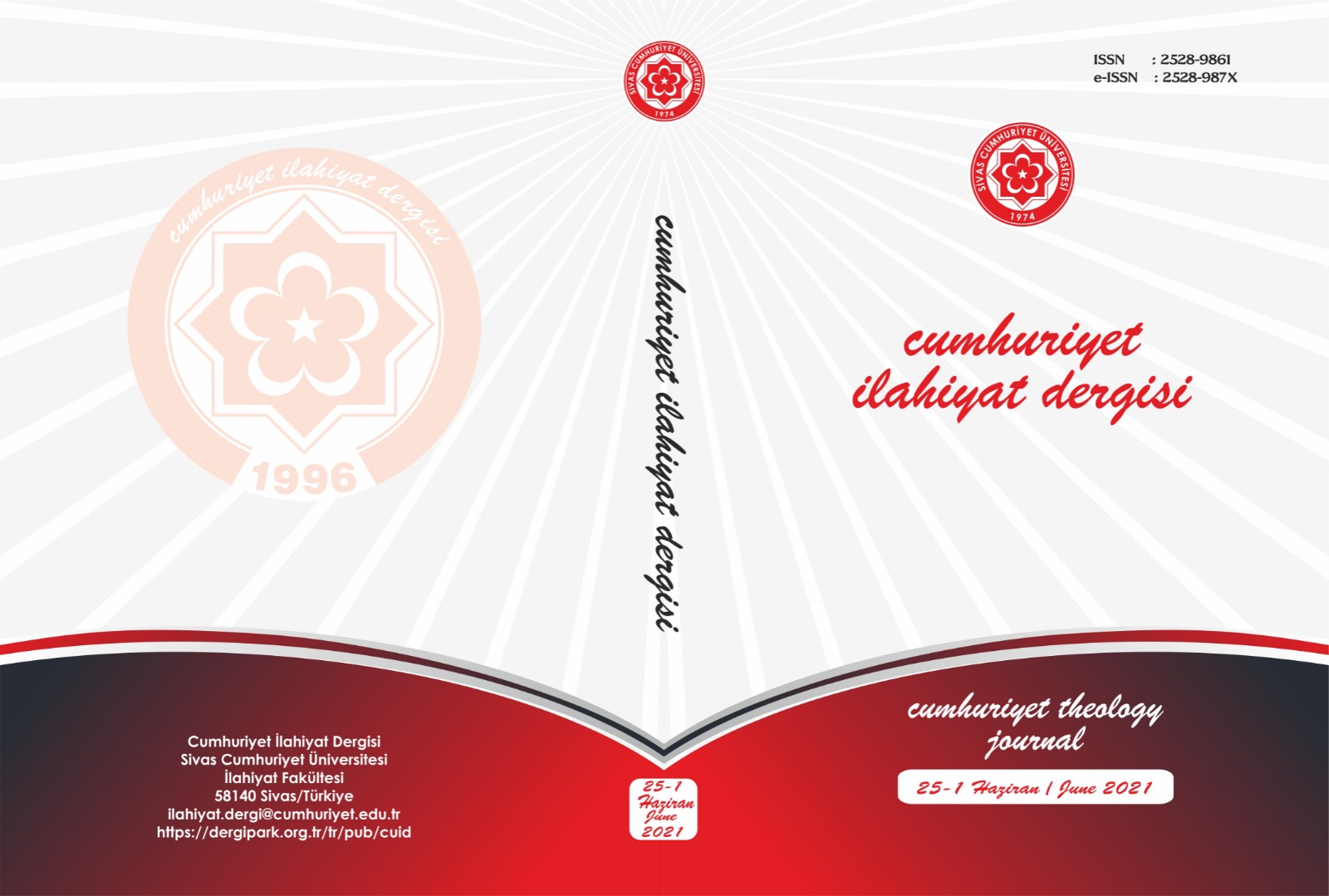Qurʾānic Knowledge and Akbarian Wisdom: Ibn ‘Arabī’s Daring Hermeneutics in Fuṣūṣ al-ḥikam
Kur’anî Bilgi ve Ekberî Hikmet: Fusûsü’l-Hikem’de İbn Arabî’nin Cesur Hermenötiği
Author(s): İsmail LalaSubject(s): Gender history, Theology and Religion, History of Islam
Published by: Cumhuriyet Üniversitesi İlahyat Fakültesi
Keywords: Ṣūfism; Ibn ‘Arabī; Fuṣūṣ; Qur’ān; Prophets; Tafsīr;
Summary/Abstract: Muḥyī al-Dīn ibn ‘Arabī is arguably the most influential Ṣūfī theorist in Islam. In his most enduringly popular work, Fuṣūṣ al-ḥikam, he conspicuously and persistently demonstrates that whatever our perception of a prophet in the Qurʾān, the wisdom associated with him and derived from him is very different. This is not to suggest that Ibn ‘Arabī denies the literal text of the Qurʾān. Quite the contrary. He simply asserts that there are different levels of perception of and reception to the Qurʾān: The outer reality (ẓāhir) of the Qurʾān is for mass consumption and is the knowledge one derives from, according to Ibn ‘Arabī, a superficial understanding of the Qurʾān. There is, nevertheless, a deeper understanding of the inner reality (bāṭin) of the Qurʾān that is the preserve of the gnostics (‘ārifūn). Through this reading of the Qurʾān, one that goes beyond the outer reality but is inextricably bound to it, Ibn Arabī perpetuates the tradition of mystical interpretation of the Qur’ān whilst doing so in his own way and executes his primary objective in every chapter of the Fuṣūṣ: Highlighting the antithesis between the ẓāhir and bāṭin of the Qurʾān, whilst maintaining the legitimacy of both, and even going as far as to assert that the bāṭin may only be accessed through the ẓāhir. This paper scrutinises four chapters of the Fuṣūṣ in which we find the most explicit cases of this mutually-dependent knowledge (‘ilm)/wisdom (ḥikma) antithesis, and have been selected for specific reasons: The chapter of Ādam was chosen as it is the first chapter of the Fuṣūṣ and in it Ibn ‘Arabī’s objective and approach for the work in its entirety comes into sharp focus. The chapters of Lūṭ and Hārūn were singled out as they constitute the most perspicuous examples of the Andalusian’s binary hermeneutic principle. Finally, the chapter of Nūḥ was selected because it displays that even when Ibn ‘Arabī seems to contradict the ẓāhir of the text, he is actually elucidating a more advanced interpretive model that builds on the primary exoteric one. In the chapter of Ādam, Ibn ‘Arabī suggests that the Qur’ānic representation most consistently associated with Ādam is of his humanity as he is the father of mankind. Yet his wisdom is of divinity. This is because it is only in the human that the divine finds His starkest and fullest expression. The Qur’ānic symbol of Nūḥ, on the other hand, is the flood in which the vast majority of his people drowned. His wisdom, according to the Mystic, is making things swim—the wisdom of subbūḥiyya/ sabbūḥiyya. For Ibn ‘Arabī, drowning, rather than a cause of death, becomes a source of life. Lūṭ’s most abiding image in the Qur’ān is of his powerlessness because of his seeming inability to curb the transgression of his people. His wisdom, nevertheless, says Ibn ‘Arabī, is power. Finally, Hārūn is portrayed in the Qur’ān as being obedient to Mūsā. He was granted prophethood to aid his brother, to assist him in bearing his burden. Even when Mūsā goes to Sinai and leaves him in charge, he is only fulfilling his role as Mūsā’s helper and is subordinate to him. Yet his wisdom is the antithesis of subordination, it is of leadership.
Journal: Cumhuriyet İlahiyat Dergisi
- Issue Year: 25/2021
- Issue No: 1
- Page Range: 479-493
- Page Count: 15
- Language: English

